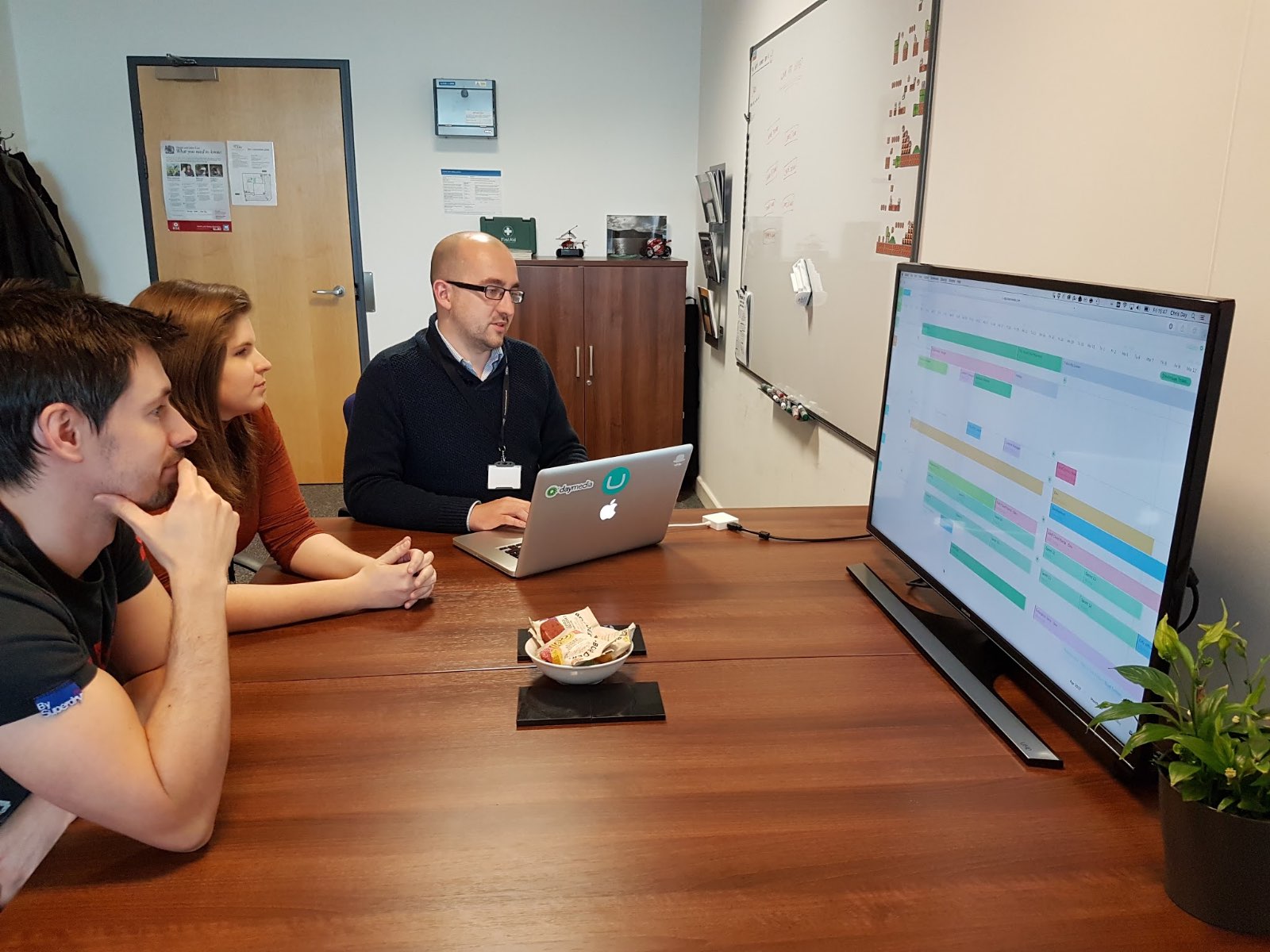Scheduling with Teamweek

We’re all friends here so let’s not beat around the bush. Scheduling is a balancing act. Sometimes it can feel like you’re spinning a dozen plates on sticks whilst being pelted with tomatoes.
Or at least for us, that’s how it used to feel – before we started using Teamweek.
If you haven’t already heard of Teamweek, it’s a project management tool that makes scheduling quick, easy and painless. It’s core premise is to ‘bring some sanity into a project manager’s crazy life’. Sounds good, huh?
So how do we use it?
Our team compromises of talented designers and skilled developers. And although we work together to build quality digital products – more often than not we’ll be working on them at different times.
Flexible scheduling
Every project we take on begins with outlining the requirements, and from that we’ll produce time estimates based on our experience. Those time estimates are then put into Teamweek and assigned to the relevant team members. Thankfully the user interface makes this super quick. The simple click and drag feature means that we can schedule in a project within seconds.
Our scheduling process is actually pretty simple:
- Discuss
- Plan
- Do
- Repeat
And we do this on a weekly basis. “Why?” I hear you ask. Because things change and they can change rapidly. Something we thought might take a week, only took 2 days and vice versa.
So each week our team leaders and managing director come together to discuss the teams progress across all current projects. We then plan and tweak the schedule based on this, and the team then continues to do the work.
Teamweek makes this process really quick. It also offers realtime viewing of the schedule and notifies team members of any changes which is a super handy, effortless way of keeping everybody informed.
Viewing
Teamweek’s gantt chart interface provides each team member with a clear view of what they’re working on, when and how long for. They can also see what the rest of the team are working on too. This allows us to identify dependancies in our schedule. For example, a developer is due to being developing an app on Monday, which means the design and assets need to be ready for then.
For us, Teamweek offers a helicopter view of what’s going on across the board, rather than individual tasks. The finer details are managed outside of Teamweek through tools such as Basecamp or Taiga, and although Teamweek can integrate with Basecamp, we prefer to keep things top level.
Why Teamweek?
As a digital agency, we’re suckers for great user experience and an attractive user interface. Teamweek has that. The click and drag feature makes scheduling quicker, meaning we can turn our attention back to doing what we love. Creating quality digital products.
The ability to add public holidays is also really handy, because let’s face it – who know’s when Easter Bank holiday actually is?
Looking forward
An exciting feature for us would be the ability for team members to perhaps log their progress of a task within Teamweek. To be able to see a team members progression on a task would allow us to identify early on if more or less time is needed.
We’ve been using Teamweek for several years now and it’s played a pivotal part in our organisational systems. Allowing us to plan day to day and look to the future is a real asset which we’ll continue to use. Hat’s off to Teamweek for making project management genuinely painless!